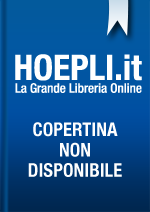
Questo prodotto usufruisce delle SPEDIZIONI GRATIS
selezionando l'opzione Corriere Veloce in fase di ordine.
Pagabile anche con Carta della cultura giovani e del merito, 18App Bonus Cultura e Carta del Docente
The Earth is not the world it once was, and it is not the world it will always be.
This book describes the exciting, complex, and occasionally baffling history of our own planet. Over the course of its 4.5 billion years, Earth has undergone astonishing changes to its surface and atmosphere, at times more closely resembling other planets in our Solar System than the habitable, teeming biosphere of today.
Through these otherworldly analogs, author-illustrator Michael Carroll teaches readers about different aspects of our own planet’s past. Our nearest cosmic neighbor, Venus, offers insights into Earth’s own young atmosphere and surface, while Saturn’s moon Titan may offer a window into the genesis of life on Earth. Planet Earth, Past and Present explores these and many more connections.Original art accompanies each chapter, depicting major stages of the Earth’s evolution and providing vivid comparisons to other planets or moons. Come along on this journey through the Solar System—a journey that ultimately leads us home.
Introduction: The Earth today, and the alien worlds around it
1. Before Earth
o Formation of the solar system: temperature and compositional gradients in the cloud
o Planetary rings as analogs to our protoplanetary disk· Lords of the rings, moons and waves
o Views of extrasolar disks and what they tell us of our roots
· Seeing our past through Hubble and Spitzer
o The “snow line” and structure of the early Sun’s nebular cloud
o Our solar system’s habitable zone
· Habitable zones around other stars
o Our place in the Milky Way galaxy
· The galactic habitable zone
2. Earth=Mercury: Earth as a molten world
o Terrestrial planets begin as molten balls of rock
§ Accretion and differentiation
§ Earth formation: cold or hot?
§ The importance of layers
o Mercury’s beginnings: raining rock and metal§ The sky is falling: metallic vs stony asteroids, cometary ices
o How Mercury and the Earth differ, solar influences
o Shared heritage, the echoes of planet Mercury within the rocks of Earth
· [news inset: newly discovered mineral inside a diamond hints at the nature of Earth’s deepest mantle]
3. Earth=Venus: Our planet as a Dante-esque oven
o Ocean vs desert, and where the balance lies
o Oceans condense from atmosphere
o Earth before rust: land and sea without free oxygen
· [news inset: Earth’s evil twin: why did Venus end up so different from Earth? Asteroid impacts may be the culprit]
o New dawn for Venus: upcoming missions and what they may soon tell us
4. Earth and the Asteroid belt: the impact of an uneasy relationship during the great solar system cleanup
o Are the asteroids a failed planet?
o What the asteroids added to the Earth’s mix
§ Specific minerals, water, gases
o Birth of the Moon.
§ Theia impact
o [inset: Large low-shear velocity provinces: evidence for Theia remnants?]o The Moon’s importance for tides, axial stabilization, etc
o The Earth/Jupiter relationship, a natural force-field
· [news inset: missions to the asteroids: can we move the rocks?]
· [news inset: what we’ve learned from Ryugu and Itokawa samples]
5. Earth=Titan
o Titan as a chemical proxy for the early Earth (nitrogen and methane, a winning combination?)
§ Titan’s methane as starting point for complex organics
§ Titan as a snapshot of Earth’s prebiotic chemistry
· Photochemistry leads to building blocks of life· Earth evidence wiped out, but Titan’s is frozen for us to explore
o The great mystery: first life§ Was the atmosphere of pre-biotic Earth reduced or oxidized?
§ Hydrogen cyanide and the “cyanosulfidic” pathway to life
§ Panspermia and its problems; cosmic dust and precursors to amino acids
§ Carbonaceous chondrites, comets, and how they relate to life
o Earth as a nursery
§ Chemistry and energy in the beginnings of life
§ Life under pressure: synthesis of organic matter from inorganic molecules near submarine hydrothermal vents and geothermal poolso Earth’s oxygenating event and how biology sculpts a planetary environment
o Titan as a primordial Earth analog
§ Many parallels with ancient Earth· Reduced atmosphere; early Titan warmer and richer in oxygen, similar to Earth
· Primary chemical composition and vertical profile of the atmosphere
· Physical and chemical combinations (including thymine and cytosine production at Titan)
· Energy sources (sunlight, Saturn radiation, possible cryovolcanism)
· Atmospheric greenhouse effects
§ Life’s building blocks?
· Cell membranes from acrylonitrile
· Photochemically produced organic chemistry, amino acids and tholins (Miller- Urey and follow-on experiments)
· Three places for water on Titan
· Carbon-based life without accessible water
· Ammonia instead of water: N chemistry and pseudo biochemistry
· Where is the methane coming from?
§ Is life in the universe inevitable? Dinosaurs to protozoans, a rich menagerie
§ Future Titan: a new birthplace?
· [news inset: changes in Earth’s spin may have led to oxygen buildup]6. Earth=Mars: the “Snowball” or “Slushball” Earth
o The past lives of Earth and Mars
§ Water, water everywhere, but not a drop to breathe: oxygen-poor watery environments of early Mars and Earth
§ Continent configuration: how landmass arrangement affects climate (did Mars have plate tectonics?)§











Il sito utilizza cookie ed altri strumenti di tracciamento che raccolgono informazioni dal dispositivo dell’utente. Oltre ai cookie tecnici ed analitici aggregati, strettamente necessari per il funzionamento di questo sito web, previo consenso dell’utente possono essere installati cookie di profilazione e marketing e cookie dei social media. Cliccando su “Accetto tutti i cookie” saranno attivate tutte le categorie di cookie. Per accettare solo deterninate categorie di cookie, cliccare invece su “Impostazioni cookie”. Chiudendo il banner o continuando a navigare saranno installati solo cookie tecnici. Per maggiori dettagli, consultare la Cookie Policy.